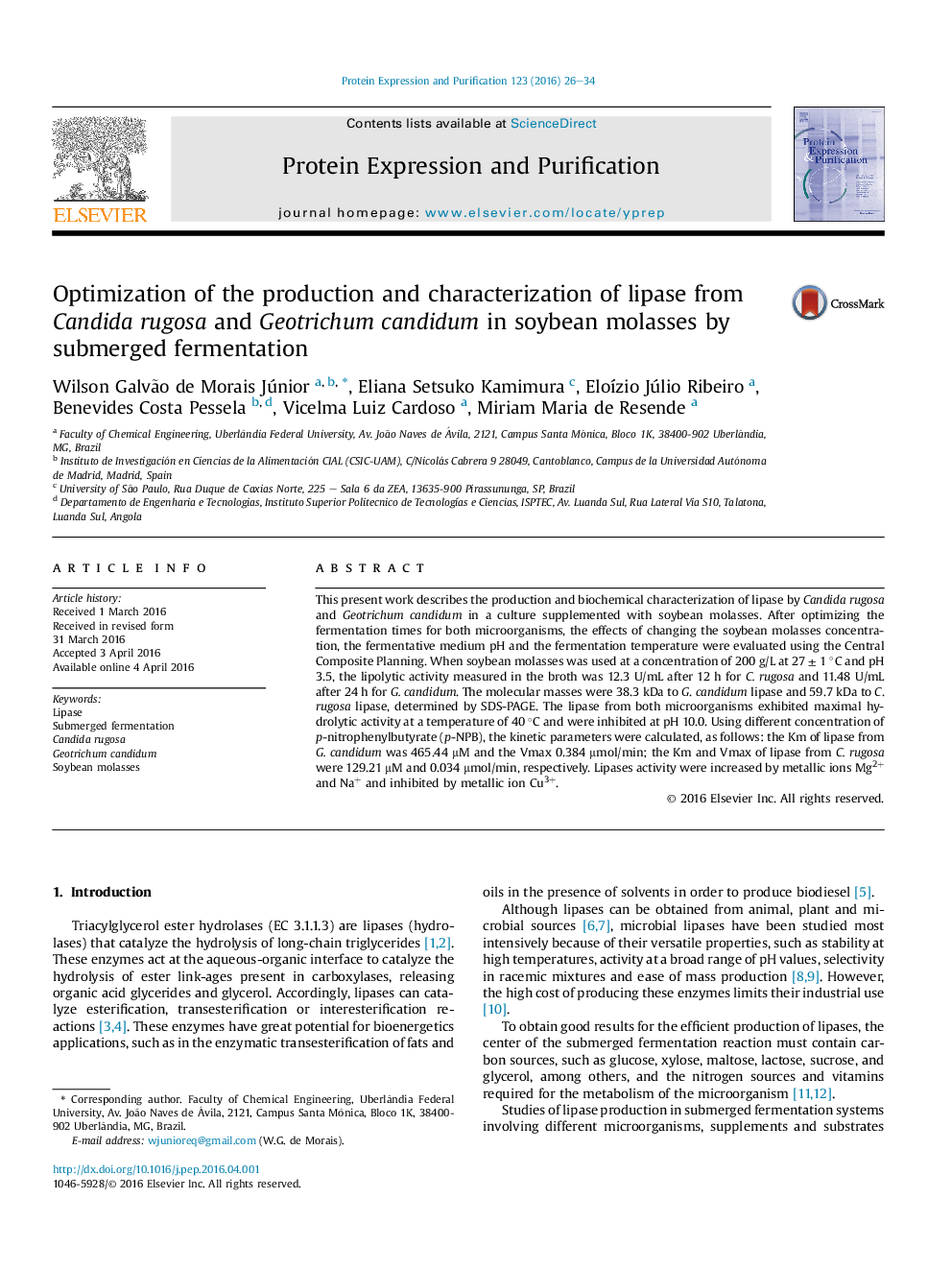| Article ID | Journal | Published Year | Pages | File Type |
|---|---|---|---|---|
| 2020229 | Protein Expression and Purification | 2016 | 9 Pages |
•Production of two different lipases using soybean molasses.•Central Composite Planning was used to study the effects of the parameters on the lipases production.•The biochemical characterization and identification of lipases was investigated.•Enzymes kinetics Km and Vmax was measured from Lineweaver-Burk (double reciprocal).
This present work describes the production and biochemical characterization of lipase by Candida rugosa and Geotrichum candidum in a culture supplemented with soybean molasses. After optimizing the fermentation times for both microorganisms, the effects of changing the soybean molasses concentration, the fermentative medium pH and the fermentation temperature were evaluated using the Central Composite Planning. When soybean molasses was used at a concentration of 200 g/L at 27 ± 1 °C and pH 3.5, the lipolytic activity measured in the broth was 12.3 U/mL after 12 h for C. rugosa and 11.48 U/mL after 24 h for G. candidum. The molecular masses were 38.3 kDa to G. candidum lipase and 59.7 kDa to C. rugosa lipase, determined by SDS-PAGE. The lipase from both microorganisms exhibited maximal hydrolytic activity at a temperature of 40 °C and were inhibited at pH 10.0. Using different concentration of p-nitrophenylbutyrate (p-NPB), the kinetic parameters were calculated, as follows: the Km of lipase from G. candidum was 465.44 μM and the Vmax 0.384 μmol/min; the Km and Vmax of lipase from C. rugosa were 129.21 μM and 0.034 μmol/min, respectively. Lipases activity were increased by metallic ions Mg2+ and Na+ and inhibited by metallic ion Cu3+.
